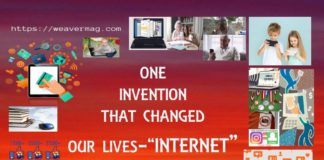Introduction
In the ever-evolving landscape of education, the introduction of generative AI has sparked both concern and curiosity among educators. OpenAI’s sophisticated chatbot, ChatGPT, triggered debates about cheating, plagiarism, and the future of traditional teaching methods. As students return to school, educators are finding themselves caught between the potential pitfalls and advantages that this technology brings. Let’s delve into the intricate web of generative AI in education, exploring how it’s reshaping classrooms and raising questions about its role.
A Shift in Perspective
The initial wave of fear surrounding generative AI’s impact on education has gradually evolved into a more balanced outlook. Students have recognized that the technology sometimes “hallucinates,” fabricating information that can be easily detected. The New York City Public Schools, previously wary of generative AI’s implications, are now exploring its potential. However, educators are taking a pragmatic approach, focusing on fostering critical thinking skills and leveraging AI to spark meaningful discussions.
The Power of Assistance
One prevailing idea is that generative AI could parallel a calculator’s influence on mathematics—assisting students in tedious tasks to enhance productivity. Lisa Parry, a K–12 school principal and AP English Language teacher, plans to incorporate ChatGPT as a “search engine on steroids” to stimulate brainstorming sessions for essay topics. This measured integration aligns with the notion that AI detection can be a valuable tool to supplement learning, rather than replace it.
Uncertainties and Challenges
Yet, the education sector finds itself grappling not only with a technology that was thrust upon it but also with the potential ramifications for students’ future careers. Lalitha Vasudevan, a professor of technology and education, highlights the uncertainty of how these technologies will ultimately influence the job market and society. The dilemma persists: How can educators prepare students for a world in flux?
Detecting Cheating
The race to detect AI-generated cheating continues, with Turnitin leading the charge. Their AI detection tool highlights sections that may have been AI-generated. However, these systems are not infallible, often yielding false positives. Turnitin advocates for conversations between educators and students, emphasizing the role of these tools as aids rather than judges.
The Imperfections of Detection
Turnitin’s struggles in AI detection mirror generative AI’s own limitations. There’s a fine balance between training AI to detect and inadvertently flagging writing styles from diverse backgrounds. False positives abound, with English learners and AI sharing a propensity for simplicity in sentence structure and vocabulary. The quest for accurate detection is marred by potential bias.
Embracing AI as a Learning Tool
Educators are adapting their approaches to make generative AI a teaching tool. David Joyner, a professor at the Georgia Institute of Technology, likens AI usage to collaboration with peers. He encourages students to utilize AI while retaining ownership of their work. This approach fosters an environment where AI augments learning rather than undermines it.
Facing Ethical and Equity Issues
As AI becomes an integral part of education, teachers like Theresa Robertson are tackling the ethical implications. Robertson prepares her students for a world shaped by AI, ensuring they understand its implications and ethical considerations. There’s a collective responsibility to address the equitable use of AI technology, particularly among marginalized students.
Striving for Equitable Integration
In the dynamic landscape of education, where technology and learning intersect, the pursuit of equitable integration of generative AI tools like ChatGPT poses significant challenges and prompts essential conversations. As schools and educators endeavor to navigate this new terrain, the imperative to develop a consensus and establish best practices becomes paramount.
A Multifaceted Challenge
Crafting a consensus around the integration of generative AI in education is akin to assembling a complex puzzle with many pieces. The responses of educational institutions have showcased a remarkable spectrum of approaches, highlighting the diversity of perspectives and the complexity of the issue. While some institutions are quick to embrace AI tools, others exercise caution, weighing the potential benefits against the inherent risks.
Varied Responses and Concerns
Educational institutions’ diverse reactions reflect their considerations about privacy, data security, and the ethical implications of AI-powered tools. Privacy concerns take center stage, as the data shared and utilized within AI platforms could raise questions about the safeguarding of sensitive student information. Data security breaches could lead to potential vulnerabilities, further underscoring the need for robust protection mechanisms.
The Promise of Innovation and Access
Undoubtedly, AI technologies hold the potential to revolutionize education, offering innovative solutions to age-old challenges. AI-powered tools can personalize learning experiences, cater to diverse learning styles, and engage students in novel ways. However, as schools and educators embrace these possibilities, the glaring issue of the digital divide comes into focus.
The Looming Digital Divide
The digital divide, characterized by the uneven distribution of technological access and literacy, poses a significant threat to the equitable integration of AI tools in education. Low-income students and marginalized communities could find themselves on the wrong side of this divide, lacking access to the tools that could enhance their learning journey. The integration of AI into education, without a concerted effort to address this divide, could inadvertently deepen existing disparities.
Fostering Inclusivity
The cornerstone of equitable integration lies in fostering inclusivity and ensuring that AI-powered tools benefit all students, irrespective of their backgrounds. Educators and policymakers must collaborate to create strategies that provide access to AI technologies for all students, regardless of socioeconomic status or geographical location. This involves not only deploying the technology but also investing in digital literacy initiatives that empower students to leverage these tools effectively.
Education Beyond the Classroom
The challenges extend beyond the classroom, encompassing the broader education ecosystem. As parents and guardians grapple with the integration of AI tools in their children’s learning, concerns about overreliance, data security, and privacy emerge. Clear communication between schools and parents is essential to address these concerns and ensure a shared vision for equitable AI integration.
The Road Ahead
As education transitions into an AI-enhanced era, the road ahead is marked by both promise and uncertainty. The journey toward equitable integration requires collaboration among stakeholders—educators, institutions, policymakers, parents, and technology providers. Addressing privacy concerns, bridging the digital divide, and ensuring AI tools align with educational values are pivotal tasks that demand careful consideration.
Balancing Innovation and Ethics
The challenge of equitable AI integration encapsulates the delicate balance between embracing innovation and upholding ethical standards. The potential benefits of AI in education are vast, but they must be realized in a manner that upholds student rights, fosters inclusivity, and enriches the learning experience without exacerbating existing inequalities.
A New Chapter for Education
Generative AI has undoubtedly ushered in a new era of education. The initial panic has evolved into a pragmatic exploration of its potential. Educators must tread carefully, embracing AI’s capabilities while ensuring that traditional teaching values remain intact. As students embark on a journey with AI by their side, the true impact of this technology on education’s future remains to be seen. The question now is: How will educators strike a harmonious balance between harnessing AI’s power and maintaining the essence of genuine learning?









